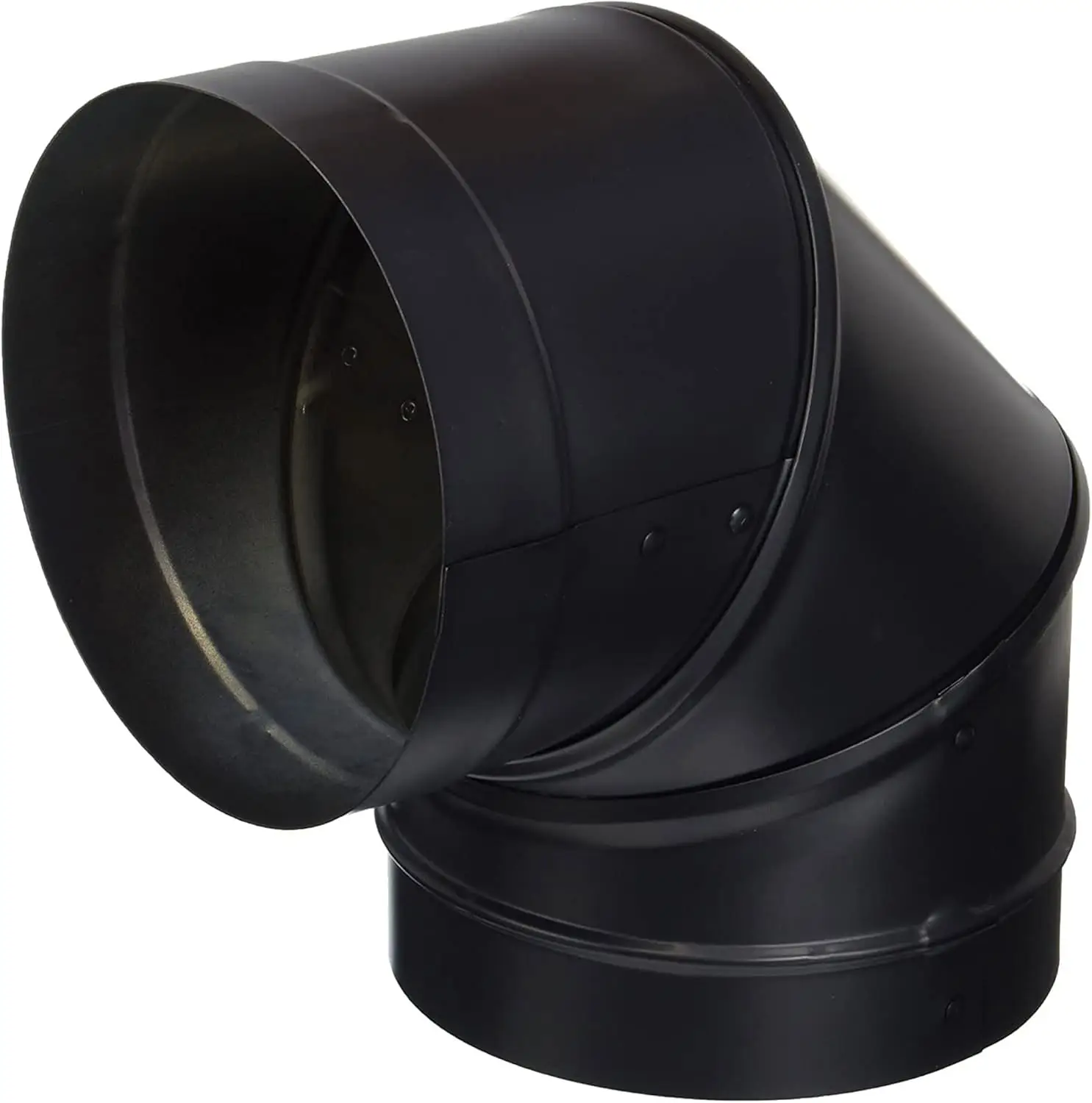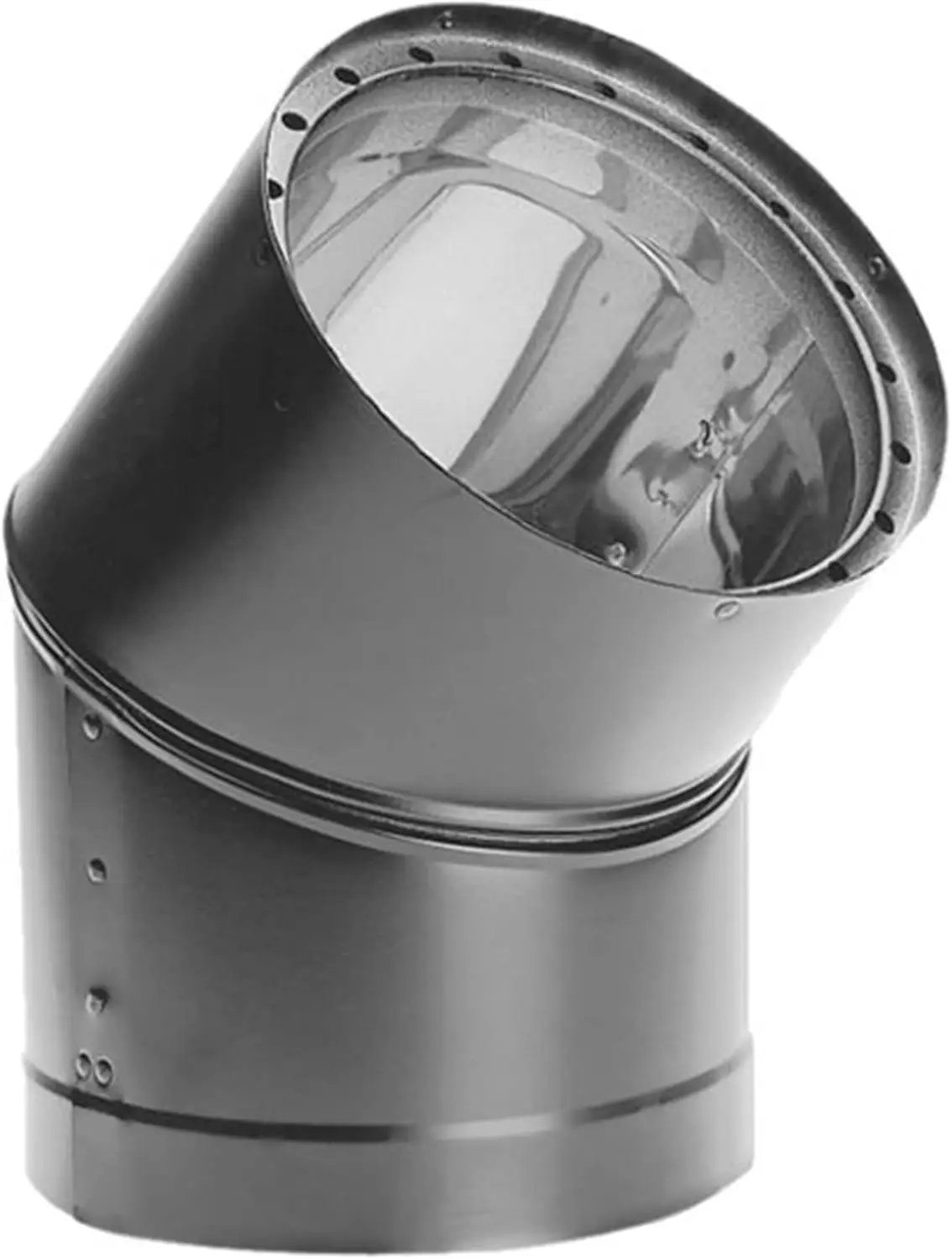Woodburning fireplaces are a classic, cozy feature in homes, but their performance heavily depends on how well the chimney system functions. One key component in many chimney systems is the elbow, a jointed pipe that redirects airflow and helps with ventilation.
In this guide, we’ll take a deep dive into the purpose, installation, and maintenance of an elbow in your woodburning fireplace chimney.
The Role of an Elbow in a Woodburning Fireplace System
A woodburning fireplace works by creating a draft that pulls air from inside the home and vents it outside through the chimney. Sometimes, the chimney needs to be bent or redirected due to structural limitations, and that’s where the elbow comes in.
The elbow is a bend in the chimney pipe that allows for this redirection while still maintaining proper ventilation.
A chimney elbow is essentially a curved section of pipe used in the chimney system to change the direction of airflow.
These elbows are commonly used when the chimney cannot go straight up through the roof or when there are obstacles in the way that require the pipe to change direction.
Best Value
DuraVent DuraBlack 90 Degree Elbow

Best Value
Galvanized Steel/Stainless Steel 45 Degree Elbow

Elbow on Woodburning Fireplace Chart
| Type of Elbow | Angle | Application | Materials | Impact on Draft | Pros | Cons |
|---|---|---|---|---|---|---|
| 45-Degree Elbow | 45° | Gradual bends in chimney pipes, used to correct minor misalignments | Stainless Steel, Galvanized Steel | Minimal impact, maintains good airflow | Good airflow, less soot buildup | Limited angle, not suitable for sharp bends |
| 90-Degree Elbow | 90° | Sharp turns where the chimney requires a significant directional change | Stainless Steel, Galvanized Steel | Higher impact on draft, may reduce airflow | Effective for tight spaces or obstacles | Can disrupt airflow, more soot accumulation |
| Adjustable Elbow | Variable (typically adjustable between 0° to 90°) | Flexible installations where exact angle is unknown | Stainless Steel, Galvanized Steel | Varies based on angle set, higher angles reduce draft | Flexible and adjustable, fits irregular spaces | Needs precise adjustment to optimize performance |
| Tee Elbow | 90° with cleanout cap | Used at the base of vertical chimney sections, for cleanout access | Stainless Steel, Galvanized Steel | Can reduce draft slightly | Easy access for cleaning and maintenance | Adds complexity to the system |
Types of Elbows for Woodburning Fireplaces
45-Degree Elbows
These are used to make minor directional changes in the chimney. They help with gradual bends, which are ideal for maintaining a strong draft.
90-Degree Elbows
These elbows make sharp turns and are more commonly used in situations where the chimney needs a significant redirection. However, they can reduce the efficiency of the draft.
Adjustable Chimney Elbows
These allow for more flexibility in installation, as they can be adjusted to various angles rather than being fixed at 45 or 90 degrees.
How an Elbow Affects Chimney Draft
The efficiency of a chimney draft, the flow of air and smoke out of the fireplace depends on the smoothness and directness of the chimney system. When you introduce an elbow, it can impact this airflow.
Chimney draft is created by the difference in air pressure between the warm air in the chimney and the cooler air outside. The smoother the airflow, the better the draft.
Impact of Different Elbow Angles on Draft Performance
A 45-degree elbow allows for a smoother flow of air compared to a 90-degree elbow, which can cause turbulence in the airflow, reducing the efficiency of the chimney.
Too many sharp bends can hinder the draft and make it harder for smoke and gases to exit the home.
When to Use an Elbow in a Fireplace Chimney?
Elbows are not always necessary, but they can be essential in certain scenarios.
If your chimney needs to avoid obstacles like beams or walls, or if it can’t go directly through the roof, an elbow is required to navigate around these issues.
Sometimes chimneys are not perfectly aligned with the fireplace below them. In such cases, an elbow can correct this alignment, ensuring that the chimney pipe connects smoothly to the fireplace.
Installing a Chimney Elbow: Step-by-Step Guide
If you’re considering installing an elbow in your chimney, here’s a basic guide to help you through the process.
Tools and Materials You Will Need
-
Elbow pipe (45-degree or 90-degree)
-
Chimney pipe
-
Measuring tape
-
Pipe cutter or saw
-
High-temperature sealant
-
Screws and screwdriver
Measure the distance from the fireplace to where the chimney pipe needs to bend. Cut the pipe, accordingly, ensuring that the elbow will fit snugly in place.
Securing the Elbow in Place
Once the elbow is in position, use screws to secure it to the chimney pipe. Be sure to seal the joints with high-temperature sealant to prevent any smoke from leaking out.
Common Mistakes to Avoid When Installing an Elbow
Even a small mistake during installation can lead to significant issues. Some common errors include:
-
Make sure the elbow is installed at the correct angle to ensure proper airflow.
-
Without proper sealing, smoke can leak into your home.
-
The chimney pipe needs to be supported properly, especially when using elbows, to prevent sagging or shifting over time.
Advantages
There are several benefits to using an elbow in your chimney system:
When installed correctly, an elbow can help the chimney navigate tight spaces while maintaining good ventilation.
Elbows allow you to work around obstacles that would otherwise make chimney installation impossible.
Potential Drawbacks
Elbows, especially 90-degree ones, can reduce the chimney’s efficiency by disrupting the flow of air.
Chimney elbows can be harder to clean, as soot and debris tend to accumulate in the bends.
Elbow Materials: Which is Best for Your Fireplace?
When choosing an elbow, it’s essential to pick a material that can withstand high temperatures.
Stainless steel is the most durable and long-lasting option, while galvanized steel may be more affordable but is prone to rust over time.
How to Tell if Your Elbow Needs Replacement
Keep an eye out for signs that your elbow needs to be replaced.
Rust, corrosion, or cracks in the elbow are signs that it’s time for a replacement.
If you’re unsure about the condition of your chimney elbow, it’s best to consult a chimney professional.
FAQs
What is the ideal angle for a chimney elbow?
A 45-degree elbow is generally better for maintaining airflow, while a 90-degree elbow may reduce draft efficiency.
Can I install a chimney elbow on my own?
Yes, but it’s essential to follow safety precautions and ensure proper sealing and alignment.
How often should a chimney elbow be cleaned?
You should inspect and clean your chimney, including the elbow, at least once a year.
Will an elbow reduce the efficiency of my fireplace?
A sharp bend like a 90-degree elbow can reduce airflow, but proper installation can minimize this effect.
What material should I choose for my chimney elbow?
Stainless steel is the most durable and heat-resistant material for chimney elbows.
Affiliate Disclosure: Fireplaceadviser.com is a participant in the Amazon Services LLC Associates Program. We may earn a commission when you click on certain links on this site and purchase.

Hello!! I am Jamal Khan. I often fix my home electric heaters and gas stove problems and research the common issues in the heating units to improve my knowledge and expertise. The aim of establishing fireplaceadviser.com is to share my expertise and knowledge with my audience.












